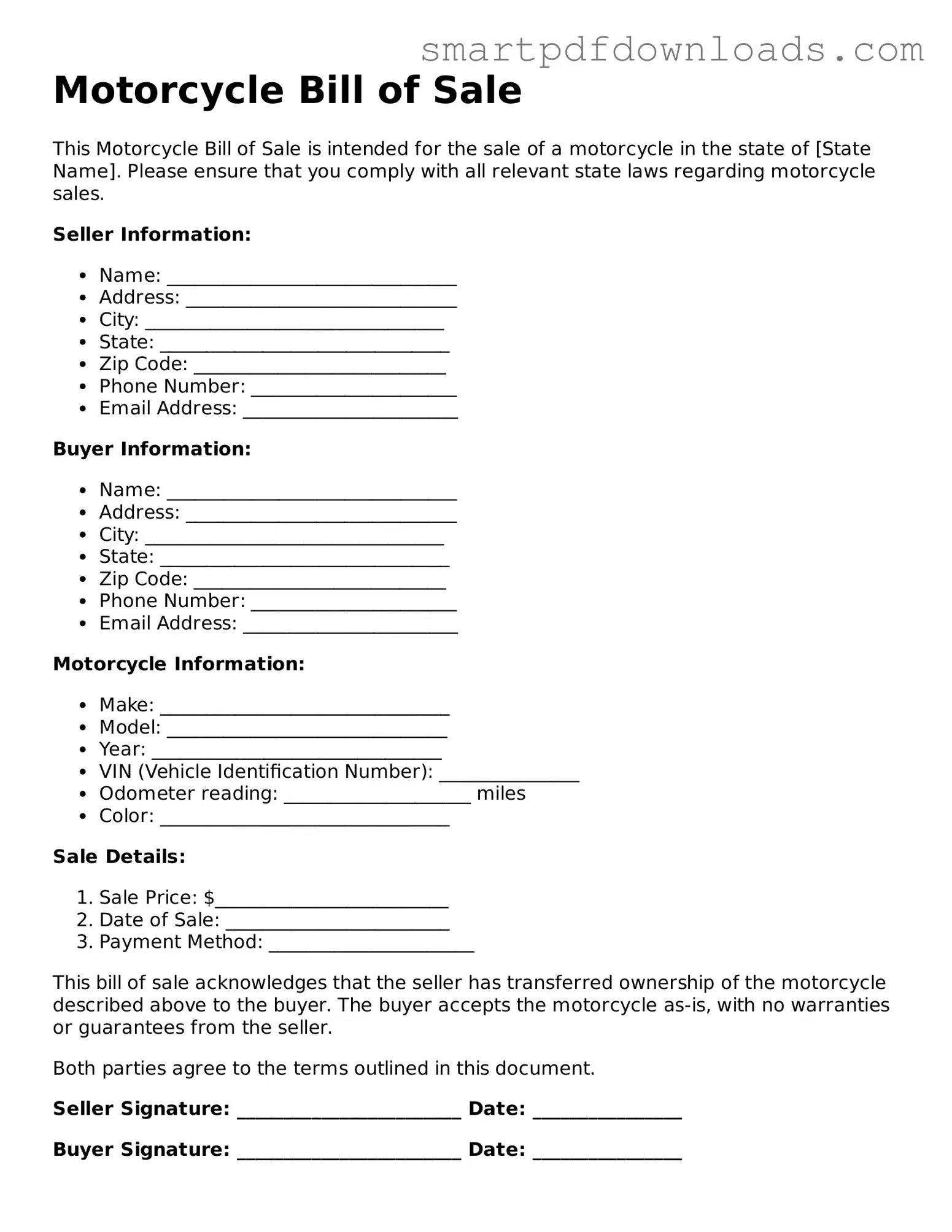Motorcycle Bill of Sale
This Motorcycle Bill of Sale is intended for the sale of a motorcycle in the state of [State Name]. Please ensure that you comply with all relevant state laws regarding motorcycle sales.
Seller Information:
- Name: _______________________________
- Address: _____________________________
- City: ________________________________
- State: _______________________________
- Zip Code: ___________________________
- Phone Number: ______________________
- Email Address: _______________________
Buyer Information:
- Name: _______________________________
- Address: _____________________________
- City: ________________________________
- State: _______________________________
- Zip Code: ___________________________
- Phone Number: ______________________
- Email Address: _______________________
Motorcycle Information:
- Make: _______________________________
- Model: ______________________________
- Year: _______________________________
- VIN (Vehicle Identification Number): _______________
- Odometer reading: ____________________ miles
- Color: _______________________________
Sale Details:
- Sale Price: $_________________________
- Date of Sale: ________________________
- Payment Method: ______________________
This bill of sale acknowledges that the seller has transferred ownership of the motorcycle described above to the buyer. The buyer accepts the motorcycle as-is, with no warranties or guarantees from the seller.
Both parties agree to the terms outlined in this document.
Seller Signature: ________________________ Date: ________________
Buyer Signature: ________________________ Date: ________________
